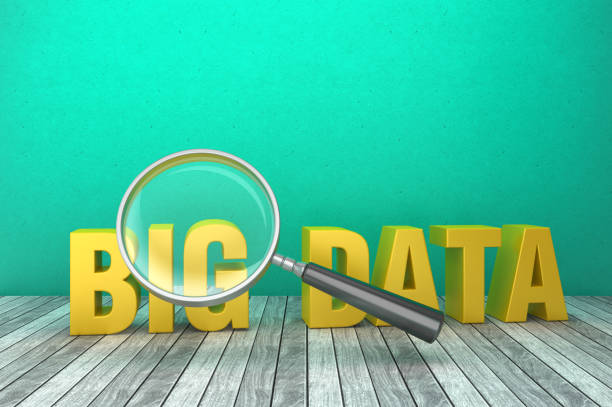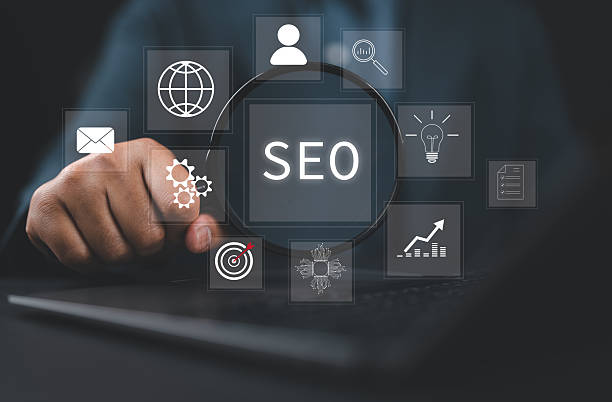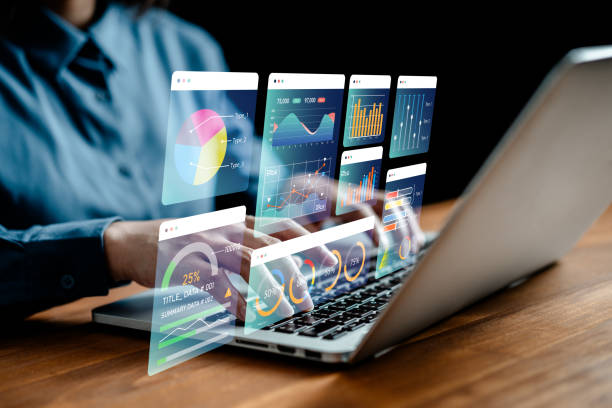What is On-Page SEO and Why is it Important?

#On-Page SEO, also known as internal SEO, refers to a set of techniques and actions performed within your website to improve its ranking in search engine results pages (SERP).
This includes optimizing content, site structure, title tags, meta descriptions, URLs, and more.
The importance of On-Page SEO lies in helping search engines better understand your site’s content and display it to relevant users.
In fact, On-Page SEO tells search engines what your site is about and why it should be shown to users.
Without proper On-Page SEO, even with the best content, your website might end up on the lower pages of search results and go unnoticed.
A strong On-Page SEO strategy not only increases organic traffic but also improves user experience, causing visitors to spend more time on your site and increasing their likelihood of conversion into customers.
In summary, On-Page SEO is one of the most fundamental and crucial parts of any SEO strategy and requires special attention.
Is your e-commerce site ready to attract maximum customers and increase sales? Rasawweb transforms your online business with modern and efficient e-commerce website designs.
✅ Increased speed and improved SEO
✅ Excellent user experience on mobile and desktop⚡ Get free e-commerce website design consultation from Rasawweb!
Keyword Research – The Cornerstone of On-Page SEO

Keyword research is one of the most important and fundamental steps in On-Page SEO.
In this stage, you need to identify the words that users employ to search for content similar to yours.
These keywords should be relevant, have a suitable search volume, and reasonable competition.
Various tools like Ahrefs, Semrush, Google Keyword Planner, and Ubersuggest are available for this purpose.
After identifying keywords, you should strategically use them in your content.
This includes using keywords in titles, subheadings, main text, meta descriptions, image Alt tags, and URLs.
It is crucial to avoid excessive use of keywords (Keyword Stuffing), as this can lead to penalties for your site from search engines.
Your goal should be to create quality and relevant content that naturally incorporates keywords and meets user needs.
Remember that keyword research is an ongoing process, and you should regularly review new keywords and add them to your On-Page SEO strategy.
Optimizing Titles and Meta Descriptions

Titles and meta descriptions are the first elements users see in search results and play a crucial role in attracting them to your website.
Titles should be engaging, concise, and include the main keyword.
Titles should not exceed 60 characters, otherwise, they will be truncated in search results.
Meta descriptions should be a summary of your page’s content and encourage users to click.
Meta descriptions should not exceed 160 characters.
Using relevant keywords and a CTA (Call to Action) in meta descriptions can increase your click-through rate (CTR).
Remember that titles and meta descriptions should be unique for each page of your website, and avoid duplicating them.
An optimized title and meta description can have a significant impact on your website’s ranking and organic traffic.
Here are examples of titles and meta descriptions:
| Type | Example |
|---|---|
| Title | Comprehensive On-Page SEO Guide – Boost Your Site Ranking |
| Meta Description | Learn how to increase your site’s ranking with On-Page SEO. Key tips, strategies, and tools. |
Content Optimization – The King of On-Page SEO

Content is the king of On-Page SEO.
High-quality, valuable, relevant, and unique content is one of the most important ranking factors in search engines.
Your content should answer users’ questions and needs and encourage them to interact with your site.
To optimize content, you should naturally use keywords, present content in an organized and readable manner, use images and videos to make content more engaging, and pay attention to internal and external linking.
Furthermore, your content should be regularly updated to always remain fresh and relevant.
A good content strategy not only increases organic traffic but also boosts your website’s credibility and authority, making users trust you.
Remember that your goal should be to create content that is valuable for both search engines and users.
Content optimization in On-Page SEO, meaning producing content that is simultaneously appealing and valuable to both search engines and users, can help improve your site’s ranking.
Are you tired of your e-commerce site having visitors but no sales?
Rasawweb solves your main problem with professional e-commerce website designs!
✅ Significant sales increase with targeted design
✅ Seamless user experience for your customers
⚡ Get a free consultation!
URL Optimization – Friendly Site Structure

URLs play an important role in On-Page SEO.
URLs should be short, descriptive, and include the main keyword.
Avoid using long and complex URLs that contain incomprehensible numbers and characters.
URLs should reflect your site’s structure and help users and search engines navigate your site easily.
For example, a good URL might look like this: `example.com/blog/seo-internal`.
This URL indicates that this page is an article about On-Page SEO located in the blog section of the site.
Using hyphens (-) instead of underscores (_) to separate words in URLs is recommended.
Also, URLs should be written in lowercase.
An optimized URL structure not only helps with On-Page SEO but also improves user experience, making it easier for users to find the content they are looking for.
Image Optimization – Visual SEO

Image optimization is an important aspect of On-Page SEO that is often overlooked.
Images can make content more engaging and improve user experience, but if not properly optimized, they can slow down site loading speed and negatively impact SEO.
To optimize images, you should use appropriate formats such as JPEG for images with many colors and PNG for images with simple graphics.
Reduce image file size without compromising quality.
Use Alt tags to describe images.
Alt tags should be descriptive and include the main keyword.
Also, optimize image file names.
For example, instead of using the filename `IMG_1234.jpg`, use `seo-internal-image.jpg`.
By optimizing images, you can improve your site’s loading speed, increase its ranking in image search results, and enhance user experience.
Using high-quality images relevant to the content can also increase user engagement with your site.
Internal Linking – Site Architecture

Internal linking refers to the process of linking from one page of your website to another page within the same website.
Internal linking is an important On-Page SEO strategy that helps search engines understand your site’s structure and determine the value of different pages on your site.
Internal linking can also improve user experience, causing users to spend more time on your site.
For effective internal linking, you should use appropriate Anchor Text.
The anchor text should be descriptive and relevant to the destination page.
Avoid excessive linking from one page to another.
Internal linking should be done naturally and logically.
A good internal linking structure ensures that important pages of your site are seen more and their ranking in search results increases.
Remember that internal linking should be done continuously and over time to have a positive impact on your site’s On-Page SEO.
Here is an example of internal linking:
| Source Page | Anchor Text | Destination Page |
|---|---|---|
| On-Page SEO Article | Internal Linking Guide | Internal Linking Guide Article |
Site Loading Speed – User Experience and SEO

Site loading speed is a crucial factor in On-Page SEO and user experience.
Users expect website pages to load quickly, and if a page takes longer than 3 seconds to load, the likelihood of users abandoning the site increases.
Search engines also prioritize site loading speed, and websites with faster loading times achieve better rankings in search results.
To improve site loading speed, you can use various methods such as optimizing images, enabling Gzip compression, using a CDN (Content Delivery Network), reducing HTTP requests, and utilizing quality hosting.
Additionally, you can use tools like Google PageSpeed Insights and GTmetrix to check your site’s loading speed and identify issues.
Improving site loading speed not only enhances On-Page SEO but also improves user experience, leading users to spend more time on your site and increasing their likelihood of converting into customers.
On-Page SEO is a method to speed up a site.
Does your current e-commerce site design lead to lost customers and sales?
Rasawweb is your solution with modern and user-friendly e-commerce website designs!
✅ Significant increase in conversion rates and sales
✅ Strong branding and building customer trust
⚡ Get a free e-commerce website design consultation from Rasawweb!
Mobile-Friendliness – SEO for Mobile Devices

Given the increasing use of mobile devices for internet searches, Mobile-Friendliness is a critical factor in On-Page SEO.
Your website should be designed to display correctly on various devices such as mobile phones and tablets, allowing users to navigate easily.
Search engines prioritize mobile-friendly websites, and sites that are not mobile-friendly receive lower rankings in search results.
To ensure your site is mobile-friendly, you can use the Google Mobile-Friendly Test tool.
Additionally, you can use Responsive Design, which allows your website to automatically adapt to the screen size of different devices.
Mobile-friendliness not only improves On-Page SEO but also enhances user experience, leading more users to visit your site.
On-Page SEO is used for all phone models.
Schema Markup – Better Content Understanding by Search Engines

Schema Markup is a code you can add to your website to help search engines better understand your site’s content and display it to relevant users.
Schema Markup provides search engines with additional information about your content, such as content type, author, publication date, ratings, and more.
By using Schema Markup, you can display Rich Snippets in search results, making your site listing more attractive and increasing your click-through rate (CTR).
There are various types of Schema Markup you can use for different content types such as articles, products, events, recipes, and more.
To implement Schema Markup, you can use the Google Structured Data Markup Helper tool.
Schema Markup is an advanced On-Page SEO strategy that can have a significant impact on your website’s ranking and organic traffic.
On-Page SEO uses Schema Markup for better visibility.
Frequently Asked Questions
| Question | Answer |
|---|---|
| What is On-Page SEO? | On-Page SEO involves optimizing elements that are directly under your control and within your website. Its goal is to help search engines better understand page content and improve its ranking. |
| Why is On-Page SEO important? | On-Page SEO provides clear signals to search engines about the page content, improves user experience, and increases the chances of attracting organic traffic. |
| What are the most important On-Page SEO factors? | Keywords, Title Tags, Meta Descriptions, URL structure, quality content, image optimization, and internal links are among the most important factors. |
| What is the role of the Title Tag in On-Page SEO? | The Title Tag is one of the most important signals for search engines and users, specifying the main topic of the page. It should include the main keyword and be engaging. |
| How important is the Meta Description? | Meta descriptions do not directly impact ranking, but by encouraging users to click, they can improve the click-through rate (CTR). |
| How to optimize images for On-Page SEO? | By using descriptive file names, appropriate Alt Text containing keywords, compression to reduce size, and correct dimensions. |
| What effect do Internal Links have on SEO? | Internal links help search engines discover and index site pages, distribute authority (PageRank) across the site, and improve user navigation. |
| Is page loading speed one of the On-Page SEO factors? | Yes, page loading speed is a critical factor in On-Page SEO and user experience. Slower pages can lead to higher bounce rates and lower rankings. |
| What characteristics does quality content have for On-Page SEO? | Quality content should be comprehensive, unique, relevant, trustworthy, readable, and fully answer users’ needs and questions. |
| How can keywords be used in content? | Keywords should be used naturally in titles, subheadings, the first paragraph, body text, and image Alt Text. Avoid keyword stuffing. |
And other services of Rasawweb Advertising Agency in the field of advertising
- Smart Sales Automation: Professional optimization to increase click-through rates by optimizing key pages.
- Smart Data Analysis: An innovative service to increase user engagement through Google Ads management.
- Smart UI/UX: A fast and effective solution for customer acquisition, focusing on attractive user interface design.
- Smart Brand Identity: Professional optimization to increase site visits by customizing user experience.
- Smart Custom Software: Transform customer behavior analysis with the help of marketing automation.
And over hundreds of other services in internet advertising, advertising consultation, and organizational solutions.
Internet Advertising | Advertising Strategy | Advertorials
Resources
Moz: What is On-Page SEO?
Search Engine Journal: Complete On-Page SEO Guide
Ahrefs: On-Page SEO Optimization
Semrush: On-Page SEO Checklist
❓ At Rasawweb Afarin Digital Marketing Agency, we help your business shine in today’s competitive world and achieve its goals. From multilingual website design to search engine optimization and social media management, we are with you to ensure a powerful online presence.
📍 Tehran, Mirdamad Street, next to Bank Markazi, Southern Kazeroun Alley, Ramin Alley, No. 6

